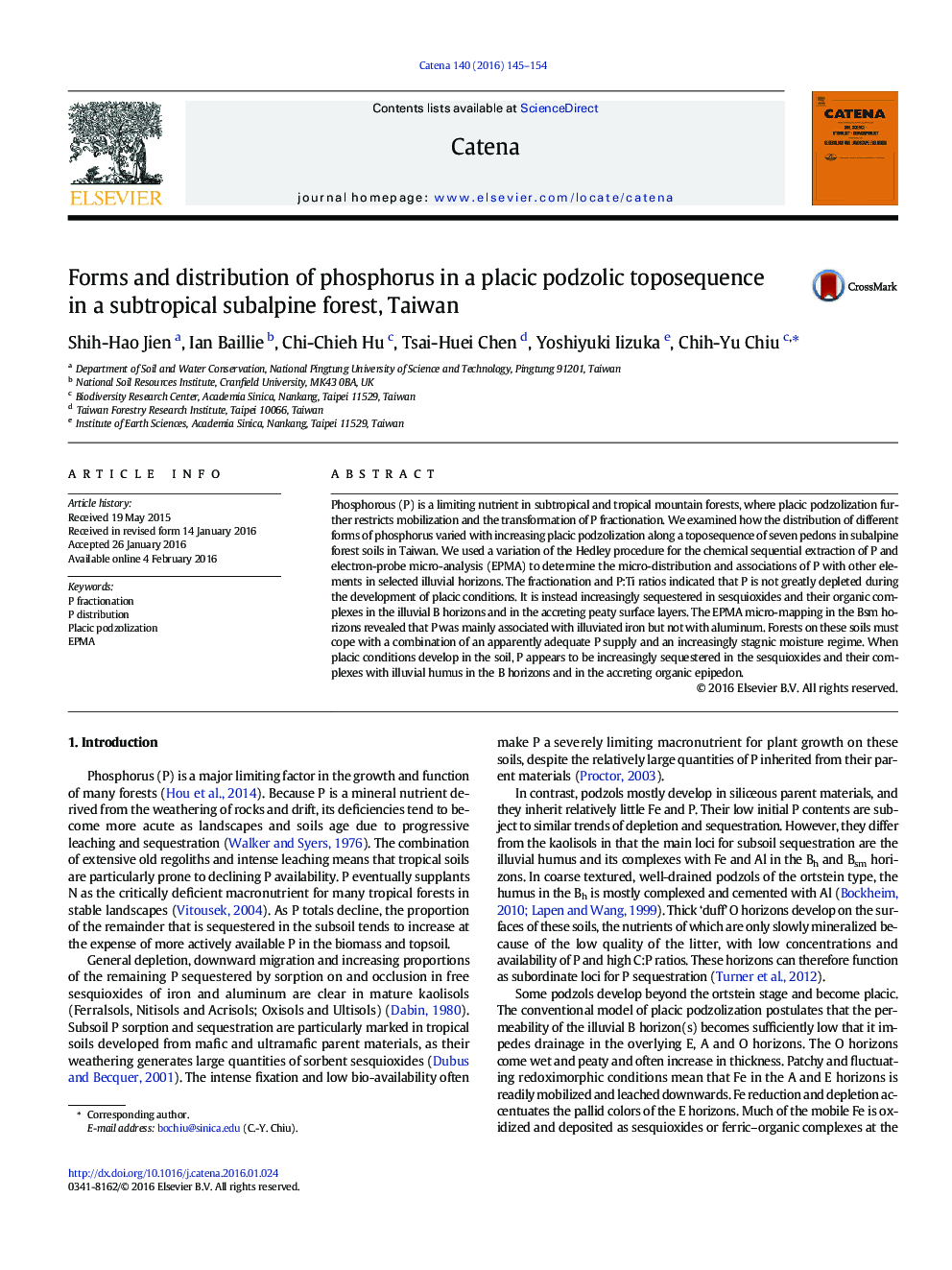| Article ID | Journal | Published Year | Pages | File Type |
|---|---|---|---|---|
| 4570927 | CATENA | 2016 | 10 Pages |
•We traced links between placic podzol pedogenesis and P distribution.•We described and sampled a toposequence of subalpine forest soils in Taiwan.•We analyzed P forms and locations by sequential extraction and electron-probe.•Much P is sequestered in B horizons.•Bsm impermeability created wet organic topsoils, which increasingly sequestered P.
Phosphorous (P) is a limiting nutrient in subtropical and tropical mountain forests, where placic podzolization further restricts mobilization and the transformation of P fractionation. We examined how the distribution of different forms of phosphorus varied with increasing placic podzolization along a toposequence of seven pedons in subalpine forest soils in Taiwan. We used a variation of the Hedley procedure for the chemical sequential extraction of P and electron-probe micro-analysis (EPMA) to determine the micro-distribution and associations of P with other elements in selected illuvial horizons. The fractionation and P:Ti ratios indicated that P is not greatly depleted during the development of placic conditions. It is instead increasingly sequestered in sesquioxides and their organic complexes in the illuvial B horizons and in the accreting peaty surface layers. The EPMA micro-mapping in the Bsm horizons revealed that P was mainly associated with illuviated iron but not with aluminum. Forests on these soils must cope with a combination of an apparently adequate P supply and an increasingly stagnic moisture regime. When placic conditions develop in the soil, P appears to be increasingly sequestered in the sesquioxides and their complexes with illuvial humus in the B horizons and in the accreting organic epipedon.
